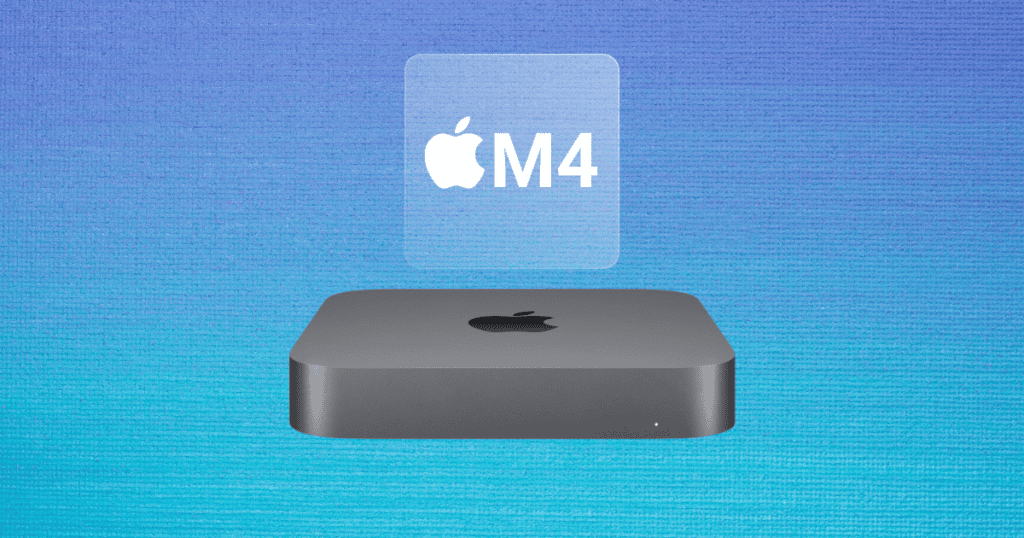Apple’s decision to remove USB-A ports from the upcoming Mac Mini in favor of an all USB-C configuration represents a significant shift in its design approach, aligning with contemporary connectivity trends. While this transition promises enhanced data transfer rates and a more streamlined aesthetic, it also poses challenges for users who depend on legacy USB-A devices. This raises pertinent questions about the future of accessory compatibility and user adaptability—issues that may reshape how individuals interact with their technology going forward. As we examine the implications of this change, several factors warrant closer scrutiny.
Overview of the Mac Mini Changes
The upcoming redesign of the Mac Mini marks a significant evolution in its connectivity options, transitioning from traditional USB-A ports to an all-USB-C configuration. This shift to USB-C ports not only modernizes the device but also reflects a broader industry movement towards more streamlined and versatile connection standards.
The new design will feature a total of five USB-C ports—three located at the back and two at the front—enhancing accessibility and user experience.
The removal of USB-A ports signifies a clear departure from the current model, which accommodates both USB-A and USB-C connections. This change aligns with the ongoing trend of minimalism in tech design, allowing for a more efficient use of space within the Mac Mini.
In addition to the USB-C ports, the redesigned model will retain an HDMI connector, an Ethernet port, and a headphone jack, ensuring that essential connectivity options remain intact for users.
Benefits of USB-C Ports
Embracing USB-C ports brings numerous advantages that enhance the overall user experience. One of the most significant benefits is the enhanced data transfer capabilities, with speeds reaching up to 40 Gbps, far surpassing the maximum of 10 Gbps offered by USB-A. This makes USB-C ports particularly suitable for high-bandwidth devices, enabling faster file transfers and improved productivity.
The versatility of USB-C ports allows them to support multiple functions, including power delivery for charging, video output, and data transfer, all through a single connection. This multifunctionality reduces clutter and simplifies the user experience, making it easier to connect various devices without the need for multiple cables and adapters.
As USB-C becomes the industry standard, compatibility across a wide range of devices is promoted, facilitating seamless integration and user convenience.
Additionally, the transition to USB-C ports contributes to a cleaner and more streamlined device design, minimizing the number of ports and enhancing modern aesthetics. This shift not only modernizes the user experience but also aligns with contemporary expectations of device functionality and design, paving the way for future innovations in technology.
Impact on Accessory Market
With the anticipated removal of USB-A ports from the Mac Mini, a significant impact on the accessory market is likely to unfold. This transition to USB-C will drive increased demand for USB-C to USB-A adapters, as many users will need to connect their existing USB-A peripherals. Accessory manufacturers are expected to pivot their product lines toward USB-C solutions, reflecting the industry’s shift toward standardization and modern connectivity.
The table below illustrates the expected changes in the accessory market:
| Accessory Type | Current USB-A Compatibility | Projected USB-C Transition |
|---|---|---|
| Adapters | High | Increasing demand for USB-C to USB-A adapters |
| Hubs | Limited | Proliferation of USB-C hubs and docks |
| Cables | USB-A prevalent | Shift towards USB-C cables |
| Legacy Devices | High compatibility | Decline in compatibility |
| New Accessories | Mostly USB-A | Surge in USB-C accessory options |
As legacy USB-A devices face declining compatibility, consumers may need to upgrade their accessories or invest in adapters, ultimately influencing purchasing decisions and driving overall accessory sales in the evolving market landscape.
Timeline for Release
Anticipated for early September 2024, the new Mac Mini is poised to make a significant impact on the market with its shift from USB-A to USB-C ports. This transition represents a pivotal change in Apple’s desktop connectivity strategy, aligning with industry trends and enhancing user experience.
The M4 Mac Mini, which will replace the traditional USB-A ports with the more versatile USB-C interface, is expected to be officially unveiled in October 2024.
Initial reports indicate that shipping the new Mac Mini models may commence shortly before the official sales launch, allowing early adopters to access the upgraded models ahead of the broader market.
Apple’s typical product release schedule suggests a strategic rollout, potentially coinciding with the anticipated launches of other M4-powered devices.
This coordinated approach is likely to maximize consumer interest and create excitement around the new offerings. Continuous updates from industry insiders point to a well-planned announcement leading up to the release, ensuring that consumers are informed and engaged.
Design Innovations in Mac Mini
The upcoming redesign of the Mac Mini marks a significant evolution in Apple’s desktop lineup, characterized by a compact form factor that mirrors the dimensions of an Apple TV. This innovative approach not only enhances portability but also maintains an internal power supply for improved efficiency.
The new model will feature an aluminum casing that is slightly taller than its predecessor, representing the first major aesthetic update in over a decade.
One of the most notable design innovations is the replacement of traditional USB-A ports with five advanced USB-C ports. This transition, with three ports located at the back and two at the front, aims to improve accessibility and streamline the overall user experience.
The anticipated height of the redesigned Mac Mini, around 1.4 inches, aligns with contemporary design trends that emphasize space-saving features.
User Reactions and Concerns
Although many users acknowledge the benefits of modernizing to USB-C technology, a significant portion of the Mac Mini community expresses apprehension regarding the removal of traditional USB-A ports.
With 490 interactions recorded on discussion threads, opinions vary greatly. While some users are prepared to embrace the transition, others express concern about the inconvenience of needing new cables and adapters to connect their existing USB-A devices.
Many users rely on legacy devices that utilize USB-A connections, and the elimination of these ports may disrupt their established workflows. Suggestions have emerged for Apple to consider offering USB-A ports as a build-to-order option, allowing those dependent on older technology to maintain compatibility with their current accessories.
Historical context reveals that prior removals of legacy ports, such as SCSI and floppy drives, sparked frustration among users who valued continued access to existing peripherals.
As the transition unfolds, users may have to invest in external hubs or adapters, which could impact their overall user experience and satisfaction.
The balance between embracing innovation and accommodating legacy technology remains a critical concern for the Mac Mini community as Apple moves forward.
Future of USB Connectivity
As the tech landscape evolves, the future of USB connectivity is increasingly defined by the shift toward USB-C, which promises enhanced versatility and efficiency. The transition from traditional USB-A ports to USB-C ports reflects a broader industry movement towards standardized connectivity options that facilitate faster data transfer and charging capabilities.
This change not only emphasizes minimalism in tech design but also signals a departure from legacy technologies. USB-C ports are reversible and can transmit power, data, and video signals, thus optimizing device performance and user experience. As products adapt to this new standard, the accessory market will likely see a surge in demand for adapters and dongles to bridge the gap for existing USB-A users.
| Feature | USB-A Ports | USB-C Ports |
|---|---|---|
| Reversibility | No | Yes |
| Data Transfer Speed | Up to 5 Gbps | Up to 40 Gbps |
| Power Delivery | Limited (up to 2.5W) | Up to 100W |
| Video Output | No | Yes |
| Compatibility | Legacy devices | Modern devices |
This evolving landscape encourages innovation and new solutions to meet user needs effectively.
MacReview Verdict
The transition from USB-A to an all USB-C configuration in the upcoming Mac Mini signifies a pivotal moment in technological evolution, reminiscent of the historical shift from floppy disks to USB drives. While this change enhances data transfer capabilities and modernizes design, it simultaneously poses challenges for users reliant on legacy devices. Adapters will become essential, reflecting an ongoing trend toward obsolescence of older technologies. As connectivity standards evolve, users must adapt to these advancements or risk being left behind.




